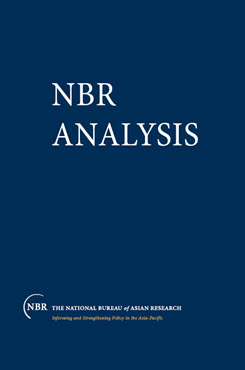Japan's Perspective on APEC
Community or Association?
In this paper, the authors examine the regionalism emerging today both theoretically and empirically, with an eye to economic as well as political-strategic relations. Their basic assumption is that the form and substance of regionalism changed radically during the 1980s, particularly after the end of the Cold War. Regionalism has now become a major factor shaping the structure of the world economy and one of the most important factors in international politics.
The Asia-Pacific region in the 21st century will surely be characterized by uncertainty filled with both promise and risk.
Promising in that the new century will see Asia driven by vigorous nationalism, by encouraging moves toward new forms of democracy, by endeavors to achieve economic prosperity, by a search for new social order, and by attempts to create a cooperative regional security framework.
The risks will lie in the potential for a collapse of fragile economies, internal conflict among political and religious factions, a reversion to totalitarian regimes, and competition among major powers to gain regional hegemony.
Reflecting this uncertainty and fluidity, the debate about the future of the Asia-Pacific region is characterized roughly by two schools of thought. On the one hand, a “back to the future” scenario is presented by the so-called realists, who argue that the end of the Cold War has released indigenous conflicts which had been contained during the Cold War era. They also argue that the region could easily destabilize and that a classical balance-of-power politics will emerge in the international relations of the region.
On the other hand, the liberal view argues that the deepened and complex interdependence among the countries of the region has curtailed military rivalry between industrialized countries. In fact, the Asia-Pacific nations are enmeshed in a web of interdependent trading and financial networks. It is argued that mutual dependencies in trade, finance, and technology both raise the cost of conflict and lower the incentives for war. Incentives for conflict are lowered because in a relatively open liberal international economy access to raw materials, finance, and markets is obtained at less cost and on a greater scale than would be possible by military control of territory or by establishing spheres of influence. Combined with the end of the Cold War, this interdependence can moderate serious conflicts in the region.
Many scholars and officials seem to believe that the Asia-Pacific region of today cannot easily be viewed from the classical realist perspective of power politics. There is a pervasive undertone throughout many of the proposals concerning a multilateral framework for the Asia-Pacific that the region, in part because of its predominant focus on economic prosperity, really has a chance of moving away from an adversarial approach to security toward a common/cooperative security framework.
In fact, calls for a multilateral approach to achieving peace and prosperity in the Asia-Pacific region have been on the rise. The end of the Cold War has encouraged countries in the region to pay more serious attention to the possible multilateral security architecture of the region.
In the field of regional economic arrangements, we have seen the establishment of the Asia-Pacific Economic Cooperation (APEC) forum. APEC is now becoming the key mechanism for promoting regional dialogue and economic interdependence, with an emphasis on the need for nondiscriminatory trade and liberalization.
In the political and security fields, the ASEAN Regional Forum (ARF) was launched in July 1994 to provide a forum for security dialogue among ministers of 18 countries of the region. ARF may play a key role in consolidating “codes of conduct” among the region’s countries. Such an initiative to bring the key players together to confer with one another is indeed vital in this contemporary post-Cold War era; indeed, it is the first time that the region has initiated a truly region wide multilateral security dialogue and cooperation.
In any event, Asian economic dynamism and the emergence of regionalism, coupled with the end of the Cold War, have posed serious challenges to the region’s countries in political, economic, and security terms.
In this paper we examine the regionalism emerging today both theoretically and empirically, with an eye to economic as well as political-strategic relations. Our basic assumption is that the form and substance of regionalism changed radically during the 1980s, particularly after the end of the Cold War. Regionalism has now become a major factor shaping the structure of the world economy and one of the most important factors in international politics.
We argue that the Asia-Pacific region needs to pursue both community building and institution building in such a way as to keep either approach from negating the effects of the other.
It is also argued that the Asia-Pacific region needs to invent a new concept of organizing the region, different from those of traditional economic integration. We also note that, because of its diverse makeup and in order to prevent polarization, APEC needs to invent some policy device in the decision-making processes by which smaller economies can maintain political autonomy vis-à-vis their big brothers. In addition, we point out many “legacies” originating from the past history of the region which, without careful attention, will seriously obstruct the stable developments of regional cooperation.


